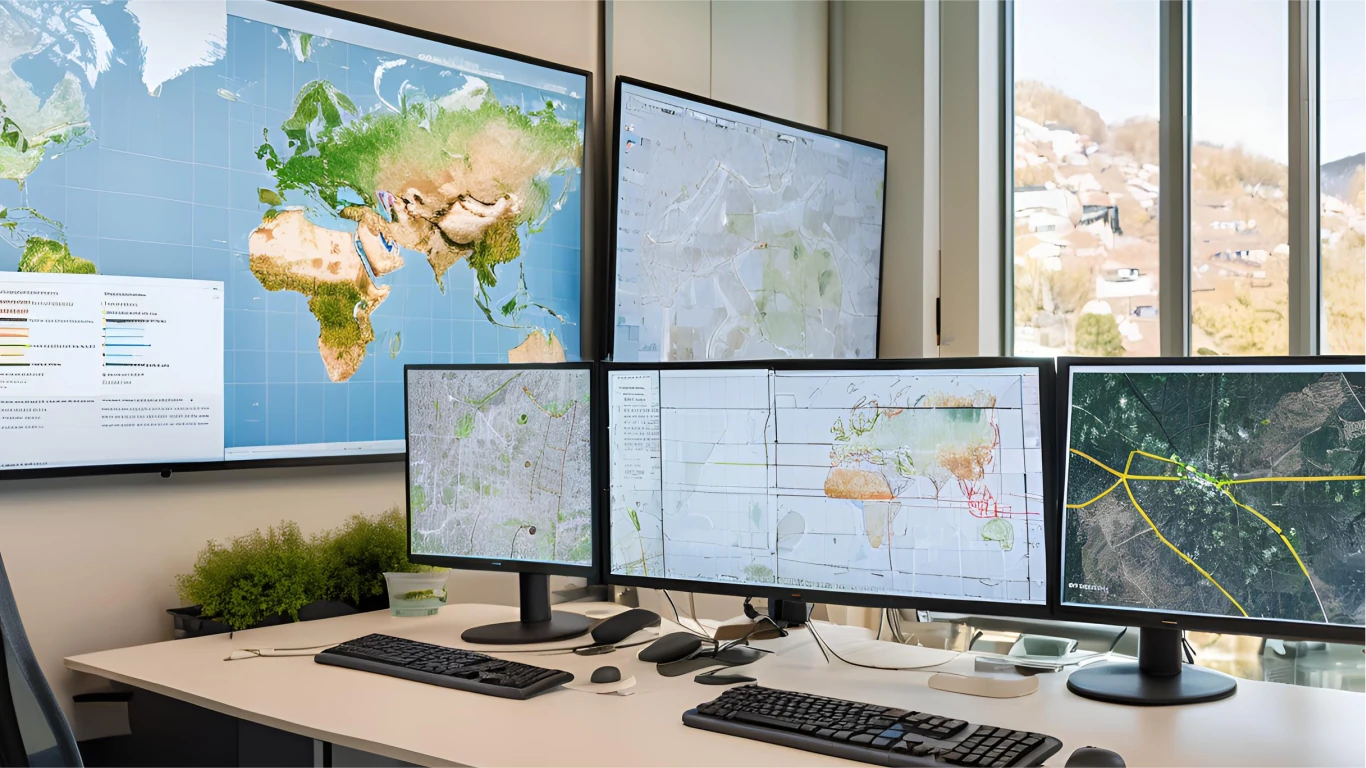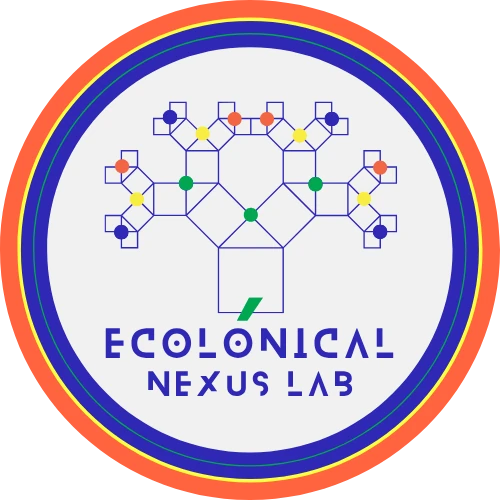No products in the cart.

Geospatial Data & AI: Ethics, Governance & Decision-Making
Contents
- The Role of Geospatial Data in Decision-Making
- The Accessibility Paradox: Who Controls Geospatial Data?
- AI Bias in Geospatial Decision-Making
- Integrating Local Knowledge with Geospatial AI
- Conclusion: Precision or Power?
- References
- Further Reading: Key Resources on Urban & Territorial Systems
- Frequently Asked Questions
- What is geospatial data, and why is it important?
- How does geospatial data influence decision-making?
- What are the ethical risks of AI in geospatial decision-making?
- Can open-source platforms improve equitable access to geospatial data?
- What role do policymakers and citizens play in geospatial data governance?
- How can individuals audit and influence geospatial AI policies?
- What are the limitations of using blockchain for geospatial data governance?
- How can geospatial data be used ethically in the future?
- What future technologies could enhance geospatial data applications?
- Author
The Role of Geospatial Data in Decision-Making
Geospatial data, powered by AI-driven geospatial data analytics, has fundamentally changed how decisions are made across multiple sectors. The ability to collect, process, and analyze spatial information in real time has led to more precise and data-driven interventions. However, does increased precision inherently translate into better decision-making? Are these technological advancements truly fostering inclusivity, or are they amplifying existing disparities?Key Areas of Transformation
- Water & Energy Management: AI-driven geospatial tools monitor drought patterns, predict flood risks, and optimize energy grid efficiency. By integrating satellite imagery with predictive models, governments and utility companies can better allocate resources and mitigate environmental risks.But who determines these allocations? While AI may suggest optimal water distribution strategies, are these decisions being made with equitable access in mind, or are they favoring industries and regions with greater economic influence?
- Infrastructure Planning: Geospatial data analytics enable the identification of structural vulnerabilities, improve transport networks, and optimize land-use strategies. AI models predict urban expansion trends, guiding the placement of roads, bridges, and public services.Yet, does this AI-driven urban intelligence truly reflect community needs? While infrastructure optimization appears objective, land-use decisions often involve trade-offs that disproportionately affect lower-income populations. Are we designing cities that prioritize efficiency over social well-being?
- Environmental Monitoring: AI-assisted geospatial mapping helps detect deforestation, pollution levels, and biodiversity changes. Governments and conservation organizations can track environmental degradation at a granular level, allowing for targeted policy interventions.But are these interventions preventative or merely reactive? AI can identify deforestation patterns, but does this data lead to meaningful regulatory enforcement? Furthermore, who controls the narrative—are these environmental insights being used to drive systemic change, or simply to justify pre-existing industrial and governmental agendas?
The Accessibility Paradox: Who Controls Geospatial Data?
1. Proprietary vs. Open-Source Data
High-resolution geospatial datasets are increasingly controlled by private corporations (Google Earth, Esri, Palantir) and government agencies, raising concerns about accessibility and transparency. While open-source platforms such as OpenStreetMap and Sentinel Hub offer alternatives, the reality is that data availability does not always equate to usability. Access to open geospatial data often requires specialized technical expertise, computational resources, and institutional support. Does the existence of open-source geospatial platforms truly democratize access, or does it simply create a new divide based on digital literacy? In a world where data is power, is technical knowledge becoming the new form of gatekeeping?2. AI-Driven Geospatial Digital Divide
- Monopolization of High-Resolution Data: Advanced geospatial analytics are expensive to develop and maintain, leading to the concentration of cutting-edge insights within well-funded entities. This creates an AI-driven digital divide where only a select few have access to the most precise, predictive intelligence.
- Unconsented Data Collection: In many cases, regions are mapped without community consent, raising questions about data sovereignty, privacy, and ethical governance. Should communities have the right to refuse remote sensing of their land? And if they do, how can those rights be enforced in a world where satellite data collection is largely unregulated?
AI Bias in Geospatial Decision-Making
Artificial intelligence is increasingly used to interpret geospatial data, shaping decisions about resource distribution, infrastructure planning, and land management. However, AI models are not neutral—they inherit the biases embedded in historical data and the priorities of those who design them. Does AI truly enhance objectivity in decision-making, or does it codify existing disparities under the guise of efficiency?1. Algorithmic Bias & Surveillance Risks
- Reinforcing Historical Inequities: AI models trained on past land-use data can replicate and even exacerbate patterns of exclusion. If previous policies favored certain regions or demographics in resource distribution, AI will likely reinforce these trends rather than correct them.
- Opaque Decision-Making: Many AI-driven geospatial tools operate as “black boxes,” meaning that their calculations and decision pathways are not always transparent. Who audits these models, and who ensures that they align with ethical considerations?
- Expansion of Surveillance: AI-powered geospatial surveillance has increased the ability to monitor environmental changes, urban expansion, and population movements. While these tools can support governance, they also raise questions about privacy, data ownership, and oversight. Should there be limits on how AI is used to track land use, movement patterns, or resource allocation?
2. Who Defines ‘Optimal’ Land Use?
AI models classify land based on productivity, economic value, and development potential, often overlooking cultural, ecological, and community-based knowledge. This creates a fundamental tension: should land-use decisions be dictated by algorithmic efficiency or by human-centered, context-aware policies?- Reductionist Approaches: AI-driven classifications often prioritize land for agriculture, infrastructure, or industrial development, leading to large-scale land conversion projects. But in doing so, they can undervalue traditional land stewardship and ecosystem services.
- Displacement Risks: AI-optimized urban expansion models may suggest relocating communities to free up land for “higher-value” uses. Who decides what is ‘higher value,’ and what protections exist for affected populations?
- Loss of Local Autonomy: Governments and corporations often rely on AI models to justify zoning and land-use regulations. Are these models serving the public good, or are they merely reinforcing top-down control over land and resources?
Integrating Local Knowledge with Geospatial AI
While AI excels at processing vast datasets, it often lacks qualitative, localized knowledge. Communities that have managed land and resources for generations possess insights that cannot be fully captured by algorithmic models. The question arises: can AI-driven geospatial intelligence truly improve decision-making if it overlooks human expertise? When AI is deployed without incorporating local perspectives, it risks creating generalized, one-size-fits-all solutions that may not be applicable to specific regions. AI models trained on global datasets may fail to recognize cultural land-use practices, historical adaptation strategies, and ecological nuances. This raises a critical issue: should technology dictate land management, or should it act as a tool to enhance human expertise?Participatory GIS & Ethical AI
To bridge this gap, there is a growing push for Participatory Geographic Information Systems (PGIS)—an approach that integrates local knowledge with geospatial analytics. But how can AI be designed to work in tandem with community-driven insights?- Collaborative Mapping Projects: By involving local communities in data collection, validation, and interpretation, geospatial tools become more relevant and actionable. Participatory GIS allows residents to identify land-use conflicts, ecosystem changes, and socio-economic shifts that AI models may overlook.
- Hybrid AI-Human Models: AI can process large-scale environmental and urban data, but it should be supplemented with field expertise. Experts on the ground can refine AI-generated classifications, ensuring that models reflect on-the-ground realities rather than abstract datasets.
- Decentralized AI Governance: Instead of centralizing geospatial decision-making, AI models should be developed in partnership with local stakeholders. Could a more decentralized, community-driven AI framework prevent misapplications of geospatial intelligence?
Conclusion: Precision or Power?
Geospatial AI is revolutionizing how we monitor, plan, and manage infrastructure, resources, and territories. Yet, despite its promise, it also introduces a fundamental paradox: Does AI-driven geospatial intelligence democratize decision-making, or does it further entrench existing power structures? As datasets grow larger and predictive models become more sophisticated, the ability to forecast environmental trends, optimize land use, and track resource consumption has never been more advanced. But with these capabilities comes a pressing ethical question: Who truly benefits from geospatial intelligence, and who is excluded from the decision-making process?From Data Extraction to Ethical AI Governance
For geospatial AI to be a tool of progress rather than exclusion, it must prioritize ethical AI governance, equitable data access, and accountability in decision-making. Achieving this requires:- Transparency in AI-driven geospatial analytics: Ensuring that algorithmic decision-making processes are explainable and subject to scrutiny.
- Decentralized and participatory data governance: Incorporating community-driven mapping and local expertise into AI systems.
- Policy frameworks that prevent monopolization: Governments and institutions must work towards legislation that guarantees fair access to geospatial intelligence and prevents corporate or state overreach.
- Integration of qualitative insights into AI models: AI should not replace human expertise but rather augment it with localized knowledge, historical context, and adaptive strategies.
References
Further Reading: Key Resources on Urban & Territorial Systems
Explore our curated selection of expert insights on urban and territorial systems, geospatial data, and AI governance. These resources provide critical perspectives on the evolving role of data and technology in decision-making.
Essential Readings
- Urban & Territorial Systems Research – Peer-reviewed studies on data-driven planning.
- Books on Geospatial & Data Science – Analyses on AI, governance, and spatial intelligence.
- Films on AI & Urbanization – Thought-provoking documentaries on data ethics, technology, and decision-making.
Open Data & Geospatial Resources
- OSGeo Open Source GIS – Free GIS software and open geospatial data resources.
- FOSS4G Global – Free and Open Source Software for Geospatial.
Mapping & Humanitarian GIS
- Humanitarian OpenStreetMap Team (HOT) – Collaborative crisis mapping.
- Mapillary – Open street-level imagery platform.
Frequently Asked Questions
What is geospatial data, and why is it important?
Geospatial data refers to location-based information derived from satellite imagery, GPS signals, and remote sensing technologies. It is crucial for applications such as environmental monitoring, disaster response, urban planning, and climate change analysis. However, concerns regarding data privacy, ownership, and potential misuse—such as mass surveillance—highlight the need for robust ethical governance.
How does geospatial data influence decision-making?
Geospatial data enables evidence-based decision-making in various fields, including transportation, healthcare, environmental conservation, and security. While it enhances efficiency and predictive modeling, over-reliance on automated analysis without human oversight can lead to biased policies and unintended socio-environmental consequences.
What are the ethical risks of AI in geospatial decision-making?
AI-driven geospatial analysis raises ethical concerns such as algorithmic bias, invasion of privacy, and the potential exclusion of local communities from critical decision-making processes. Ethical governance frameworks must address these risks through transparency, accountability, and inclusive participation.
Can open-source platforms improve equitable access to geospatial data?
Yes, platforms like OpenStreetMap, NASA Earthdata, and Google Earth Engine provide open access to geospatial data, fostering inclusivity in research and decision-making. However, challenges such as data quality, funding sustainability, and digital literacy gaps must be addressed to ensure fair and effective usage.
What role do policymakers and citizens play in geospatial data governance?
Policymakers establish legal frameworks for data protection, ethical AI usage, and fair access to geospatial information. Citizens contribute through participatory mapping, community-led environmental monitoring, and advocating for open data policies that promote transparency and accountability.
How can individuals audit and influence geospatial AI policies?
Individuals can engage in citizen science initiatives, challenge unethical data practices, and push for stricter regulations on geospatial AI implementations. Open-data collaborations, public interest litigation, and independent audits help ensure fairness and prevent the monopolization of geospatial insights.
What are the limitations of using blockchain for geospatial data governance?
Blockchain can enhance data integrity and traceability, but its limitations include high computational costs, scalability challenges, and regulatory uncertainties. Additionally, access barriers for smaller organizations and the irreversible nature of blockchain transactions pose governance challenges.
How can geospatial data be used ethically in the future?
Ethical geospatial data use requires transparency, fairness, and adherence to principles of privacy and non-discrimination. Implementing stronger regulations on data ownership, mitigating biases in AI models, and ensuring equitable access to geospatial technologies are key to fostering responsible innovation.
What future technologies could enhance geospatial data applications?
Emerging technologies such as AI-powered geospatial analytics, quantum computing for climate modeling, and next-generation satellite imaging could revolutionize how geospatial data is used. However, these advancements must be accompanied by ethical safeguards and inclusive access policies.
Author
-

Milena-Jael Silva-Morales is a systems engineer with a PhD in Urban and Territorial Systems and the founder of Ecolonical LAB, an independent research lab integrating data science, AI, and territorial systems to address local and global sustainability challenges. With over 15 years of experience leading international, multidisciplinary R&D initiatives, she is recognized for bridging science, technology, and policy to deliver transformative solutions in water, energy, and biodiversity systems.
View all posts
This article is governed by the Ecolonical Open Knowledge License (EOKL Lite V1). This license explicitly prohibits the use of its contents for AI model training, dataset integration, algorithmic processing, or automated decision-making systems. Unauthorized computational aggregation, reproduction beyond permitted terms, and any use conflicting with open knowledge principles are strictly restricted.
For legally binding terms, compliance obligations, and permitted exceptions, refer to the License Usage Policy.
Under specific conditions, this content aligns with the Creative Commons Attribution-NonCommercial-ShareAlike 4.0 International License. However, any AI-related processing, direct commercial exploitation, or automated derivative work remains subject to EOKL Lite V1 restrictions.







Leave a Reply